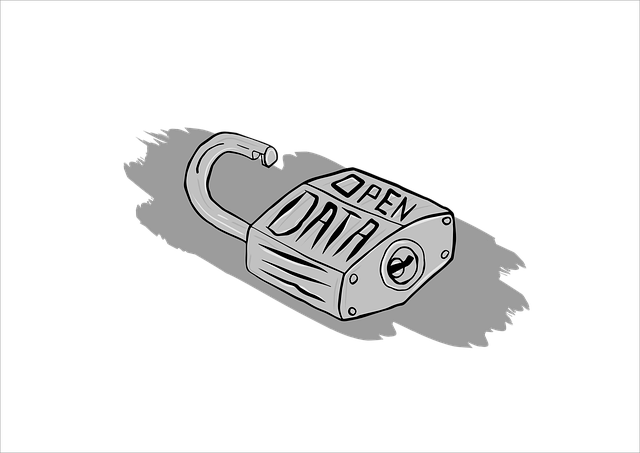Implementing HowTo Structured Data using Schema.org vocabulary significantly enhances online content visibility and interactivity through "rich results" on search engine result pages (SERPs). By organizing step-by-step guides with structured format, including images and metadata, it boosts click-through rates, user engagement, and discoverability for instructional content. Following specific properties, tags, and guidelines improves SEO, making complex tasks more accessible and engaging.
Using HowTo Structured Data to markup step-by-step content can significantly boost your search visibility and user engagement. This article delves into the power of structured data, particularly the HowTo schema, in enhancing search results with rich snippets that include images and instructional context. We explore how this markup improves click-through rates, provides better user experiences, and drives more relevant traffic to your content. Learn about structuring step-by-step guides, incorporating visuals, and adding contextual details for optimal implementation.
- Understanding HowTo Structured Data: A Foundation for Rich Results
- The Role of Schema Markup in Enhancing Search Display
- Structuring Step-by-Step Content with HowTo Schema
- Incorporating Images and Visuals into Your Markup
- Adding Contextual Instructional Details for Better User Experience
- Best Practices for Implementing HowTo Structured Data Effectively
Understanding HowTo Structured Data: A Foundation for Rich Results

Understanding HowTo Structured Data is a pivotal step in enhancing online content’s visibility and interactivity. This structured data format, based on the Schema.org vocabulary, specifically caters to presenting step-by-step guides and tutorials in a visually appealing and contextually rich manner within search engine results pages (SERPs). By marking up content with HowTo Structured Data, developers and content creators enable search engines to interpret their instructions as actionable tasks, fostering better user engagement.
The implementation of this schema for guides allows for the display of enhanced snippets, commonly known as “rich results.” These rich results can include various elements such as step numbers, images illustrating each step, and a concise summary of the process—all directly taken from the content. This visual representation not only catches the user’s eye but also provides an instant overview of what to expect, leading to higher click-through rates and improved user satisfaction. HowTo SEO tagging, when done correctly, can significantly boost online guides’ discoverability and accessibility.
The Role of Schema Markup in Enhancing Search Display

The use of schema markup, particularly HowTo Structured Data, plays a pivotal role in transforming how search engines interpret and display step-by-step content. By employing this structured data format, developers can enrich search results with essential metadata, providing users with more informative and engaging previews. This technique is especially valuable for instructional content, such as tutorials and guides, where a clear presentation of steps, images, and context can significantly enhance the user experience.
Schema markup allows search engines to extract specific details from your web pages, including the components of a tutorial or guide—from individual steps to required materials and tools. This structured information is then presented in a visually appealing manner within the search results, making it easier for potential users to comprehend the content at a glance. As a result, incorporating HowTo JSON-LD or Tutorial Schema Markup can increase click-through rates and improve overall engagement with your instructional resources, demonstrating its crucial role in modern SEO strategies.
Structuring Step-by-Step Content with HowTo Schema

When structuring step-by-step content with HowTo schema, it’s crucial to adhere to a structured format that search engines can easily parse and understand. This involves organizing each step as a distinct item within the guide, complete with relevant properties like `name`, `text`, and even `image` where appropriate. Each step should logically flow from the previous one, creating a clear sequence that mirrors the user’s journey through the tutorial. By implementing this structured data approach, you enhance the display of your content in search results, making it more engaging and informative for users looking for solutions or instructions.
The Schema for Guides plays a pivotal role in this process by providing a standardized way to represent tutorials and how-to content. Using HowTo SEO Tagging involves carefully selecting and applying relevant tags like `HowTo`, `Step`, and `Tool` (when applicable) to each component of the guide. This not only improves accessibility but also signals to search engines that the page is rich in instructional context, increasing its likelihood of appearing in specialized searches for guides and tutorials. Tutorial Schema Markup ensures consistency and accuracy in how your content is understood by search engine algorithms, ultimately driving better visibility and click-through rates.
Incorporating Images and Visuals into Your Markup

Incorporating images and visuals is a powerful way to enhance the user experience and improve the appeal of your structured data markup. When using the HowTo schema, including relevant images at each step can significantly boost the visual impact of your content in search results. These visuals not only make the instructions more engaging but also serve as valuable context for users scanning through the rich result. By integrating images with alt text that reflects the step’s description, you ensure accessibility while providing a more immersive experience.
To implement this effectively, consider using the `HowToJSON-LD` structure to embed tutorials or step-by-step guides. This schema allows for a structured representation of each step, including its corresponding image. By following the Tutorial Schema Markup guidelines, you can create rich results that display images alongside clear instructions, making your content more likely to be clicked and engaged with. This visual approach is particularly beneficial for complex tasks or DIY projects where visual cues can simplify and clarify each step for the end-user.
Adding Contextual Instructional Details for Better User Experience

When implementing HowTo structured data, enriching your content with contextual instructional details significantly enhances the user experience. This goes beyond simply listing steps; it involves providing clear explanations and guidance that help users understand the ‘why’ behind each action. For instance, including a brief introduction to each step, highlighting potential challenges, and offering tips for troubleshooting not only makes your tutorial more engaging but also ensures users receive comprehensive instruction.
By integrating these details, you enable search engines to display richer results, showcasing not just a list of instructions but a structured, helpful guide. This approach aligns with the goal of HowTo JSON-LD and Tutorial Schema Markup, which aim to present complex information in an easily digestible format. Such enhanced rich results can capture users’ attention, encouraging them to interact with your content and ultimately improving their satisfaction and understanding of the task at hand.
Best Practices for Implementing HowTo Structured Data Effectively

Implementing effective HowTo Structured Data requires a strategic approach to enhance search result visibility and user engagement. Start by ensuring each step in your tutorial is clearly defined and structured, making it easy for search engines to understand and index. Utilize descriptive language and include relevant keywords naturally throughout the content.
When marking up images, consider adding alt text that provides context and describes the visual elements of the tutorial. This not only aids accessibility but also offers search engines additional data to associate with your content. Employing HowTo SEO Tagging techniques, such as including the target keyword in the file name and descriptive captions, further optimizes image visibility in search results. Consistently formatting your tutorials with proper schema markup for guides will ultimately result in improved click-through rates and better user satisfaction.
